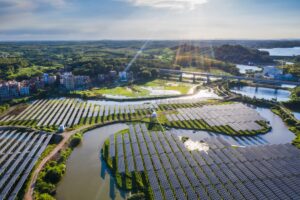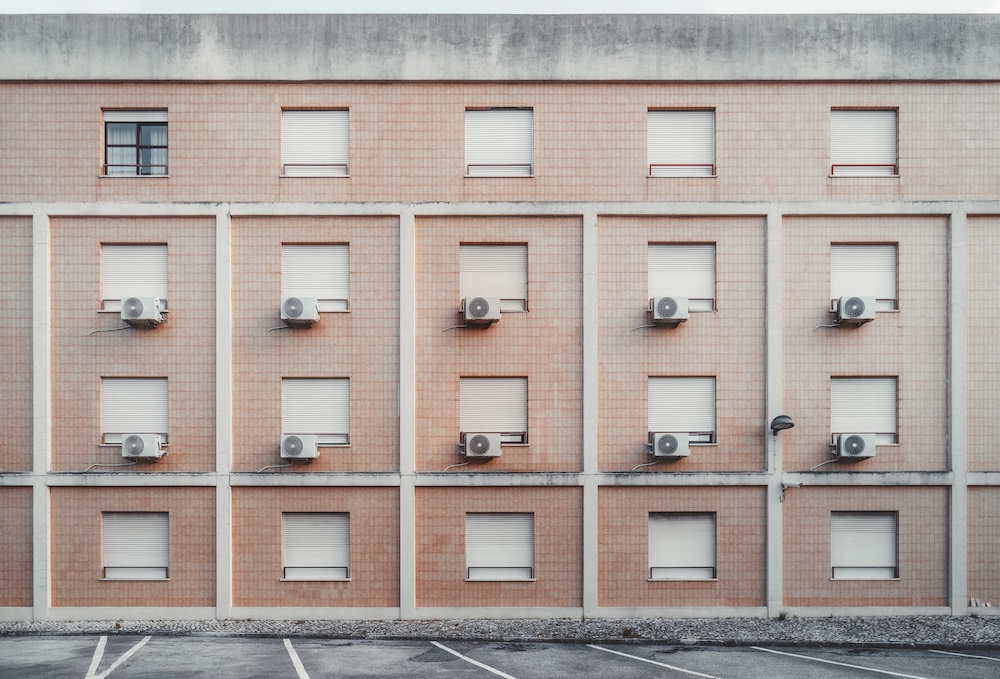Heating and cooling are things most of us barely think about — until we lose them. But behind the hum of your air conditioner or the whoosh of your furnace lies one of the most under-recognized contributors to global emissions, energy waste, and environmental harm.
HVAC systems — which stands for heating, ventilation, and air conditioning — are a foundational part of modern buildings. They keep us warm in the winter, cool in the summer, and alive in increasingly extreme weather. But the way most of them are designed and used is not sustainable. In fact, they’re part of a growing climate problem that many people don’t even realize exists.
HVAC Systems Are a Massive Source of Energy Use and Emissions
Globally, heating and cooling account for over 50% of total energy use in buildings. In the U.S. alone, HVAC systems are responsible for:
- 40–60% of energy consumption in commercial buildings
- Nearly 20% of household energy use
- A significant share of peak electricity demand during heat waves
Most of that energy still comes from fossil fuels. So when buildings turn up the heat or blast the AC, it’s not just raising comfort — it’s often raising emissions.
The Problem Isn’t Just Energy — It’s the Refrigerants
While energy use is the most obvious issue, HVAC systems also contribute to climate change in a less visible but far more potent way: refrigerants.
Most air conditioners, refrigerators, and commercial chillers still use hydrofluorocarbons (HFCs) — synthetic gases that can be thousands of times more potent than CO₂ when leaked into the atmosphere.
If HFC emissions continue unchecked, they could contribute to up to 0.5°C of global warming by 2100. That may not sound like much, but in a world already on the brink of climate tipping points, every tenth of a degree matters.
HVAC Systems Are Often Poorly Designed and Overused
Many buildings — especially older homes and commercial spaces — are equipped with oversized, outdated, or inefficient HVAC systems. This leads to:
- Wasted energy from systems that cycle on and off constantly
- Poor indoor air quality due to inadequate ventilation
- Hot and cold spots that cause discomfort and overcompensation
- Systems that run continuously because the building is poorly insulated
The result? Higher emissions, bigger bills, and less comfort — all because the system isn’t designed to work efficiently with the building it’s in.
HVAC Fuels Inequality — Literally
Access to heating and cooling is increasingly a matter of survival. As climate change drives more intense heat waves and colder winters, people without efficient HVAC systems — or without the money to run them — face serious health risks.
Low-income families, renters, and marginalized communities often live in buildings with:
- Poor insulation
- Old, inefficient heating systems
- No air conditioning at all
- High utility costs that force people to choose between comfort and food
Meanwhile, luxury office buildings and wealthy homes may run oversized systems 24/7, overconsuming energy that strains the grid and worsens emissions. This creates a climate justice issue — where the people who contribute least to the problem suffer the most.
The Push for Electrification and Efficiency
There’s good news: HVAC doesn’t have to be the problem. It can be part of the solution — if we change how we design, power, and use it.
The biggest opportunity? Electrification.
Switching from gas or oil furnaces to electric heat pumps dramatically reduces emissions — especially when paired with renewable electricity. Heat pumps are up to 3–5 times more efficient than traditional systems and can both heat and cool.
Other solutions include:
- Passive building design that reduces the need for HVAC in the first place
- Smart thermostats and zone control to avoid overcooling or overheating spaces
- High-efficiency filters and ventilation that improve air quality without wasting energy
- Regular maintenance to prevent refrigerant leaks and optimize performance
In commercial settings, demand-controlled ventilation, thermal zoning, and variable-speed fans can also play a huge role in reducing waste.
A Global Wake-Up Call: Cooling Is Exploding
As global temperatures rise, so does the demand for air conditioning — especially in hotter, developing regions.
By 2050, the number of air conditioners in use is expected to more than triple, with billions more people seeking relief from heat. Without major shifts in how cooling is powered and managed, this demand could send emissions skyrocketing and stress energy grids to the breaking point.
The transition must be both equitable and efficient:
- Low-cost, low-energy cooling solutions must be available to vulnerable communities
- Building codes and energy standards must include HVAC efficiency and refrigerant phaseouts
- Natural and low-GWP refrigerants (like propane, CO₂, or ammonia) need to replace harmful HFCs
What Individuals and Companies Can Do
Whether you’re a homeowner, renter, business owner, or building manager, you can help reduce HVAC-related emissions with a few key actions:
- Get an energy audit to see where your heating and cooling systems are wasting energy
- Seal leaks and insulate before upgrading HVAC equipment
- Install smart thermostats and use temperature setbacks when away
- Replace old systems with ENERGY STAR or heat pump alternatives
- Maintain your systems to avoid refrigerant leaks and keep them running efficiently
- Advocate for community cooling centers, building upgrades, and refrigerant regulations
For companies, HVAC retrofits can be part of your climate plan — offering measurable energy savings, tax incentives, and emissions reductions with a clear ROI.
Final Thoughts: We Can’t Keep Ignoring the Air Around Us
HVAC systems are one of those things we don’t notice until they stop working. But maybe that’s part of the problem.
Right now, they’re working too hard — burning energy, leaking gases, and driving inequality in the name of comfort. But it doesn’t have to be that way. Smarter systems, better design, and cleaner energy can turn HVAC from a hidden threat into a quiet climate ally.
Because staying warm in winter and cool in summer shouldn’t come at the planet’s expense.
And in a world that’s rapidly heating up, how we cool down may be one of the most important decisions we make.









Reader Interactions